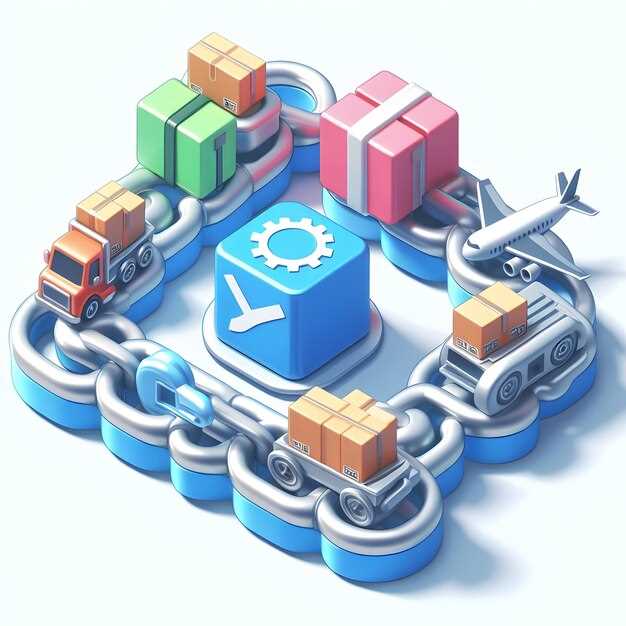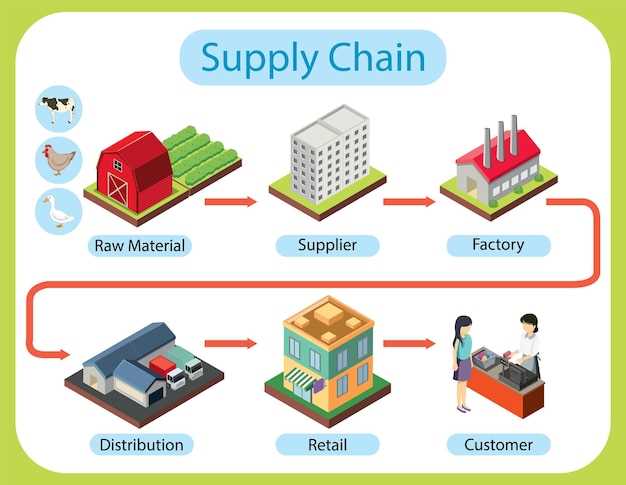Recommendation: Align the procurement schedule with demand signals to ensure some value is realized quickly; monitor data emitted by suppliers so you know where to adjust orders and keep the customer commitments intact.
To reduce wrong decisions in the process, apply cognitive supports at each step: alert rules for exception handling, decision trees, and scenario analysis that guide planners. Collect data from suppliers, factories, and warehouses and turn it into actionable dashboards that traders are able to act on within hours.
Then establish a cross-functional governance model within the company: define clear ownership, align the schedule across procurement, logistics, and sales, and ensure the team reviews exceptions weekly. Use accordingly structured KPIs to drive behavior and avoid misalignment. This alignment fait coordination smoother and reduces cycle time.
Some recommended metrics include order cycle time, fill rate, on-time delivery, and realized margin per product line. If a supplier emitted delays, escalate to alternate sources and adjust buffer levels for long lead items to protect service levels for the customer.
Applying these steps turns the Six Ps into practical action: processes are mapped, people are empowered, and data fuels reliable execution. This approach helps your team to make better decisions, reduce risk, and improve customer satisfaction through measurable, quick wins that your company can realize in weeks.
The Need for Innovation to Ensure Stable Product Supply to Customers and Meet Changing Requirements

Adopt end-to-end digital visibility and empower a manager to coordinate suppliers, forecasts, and packing plans; this would reduce stockouts and help respond to changing needs.
Research across sectors shows that integrated demand-supply planning cuts stockouts by 25-40% and lifts on-time delivery by 10-20% within a year, while forecast accuracy rises 15-25% as collaboration loops tighten.
Following this approach, build a three-tier supplier risk model with muratas as core partners, run weekly calculations to set safety stock, and standardize packing to minimize handling and damage. The process makes the organization able to produce reliable service even when a node fails, and it gives teams clues to adjust plans without cascading delays.
To keep updates flowing, deploy a cloud-based planning platform that streams data across ERP, WMS, and supplier portals. Use a simple language of KPIs–on-time delivery, fill rate, damaged units, and packing accuracy–to guide every manager’s actions; set targets for covid-19 contingencies and times of disruption. This would help the organization work with muratas; the team realized faster recovery in every situation.
Finally, enable continuous improvement by testing what-if scenarios, sharing results, and updating calculations weekly. When customers see stable supply and flexible service, the organization gains trust and can maintain price points while still meeting evolving needs with minimal waste and without unnecessary carrying costs. This gives hope that teams can adapt quickly in times of disruption.
Modular Product Design and Platformization to Support Flexible Production
Implement a modular product design around a single platform: define core modules with well-documented interfaces, and align the bill of materials so modules can be mixed across product lines. This building of a shared system reduces change cycles and makes new SKUs repeatable while preserving performance metrics. Use a clear module catalog to guide teams and suppliers.
Store product and process data in the cloud to enable transparency across chains. Having a standardized data model and digital twins gives visibility into module versions, lead times, and compatibility, helping teams anticipate disruptions and coordinate manufacturing steps.
Define the role of each supplier and the rules for collaboration; ensure the right to inspect, test, and certify components. Create a governance body to oversee interface contracts, versioning, and change control so every site can execute with confidence.
During disruptions, modular platforms allow switching to another supplier or reconfiguring the line with minimal rework. Build buffer capacity around high-risk modules and lock in alternative sources where feasible, then validate through frequent pilots across lines.
During design, uncover needs from engineering, procurement, and shop floor data; use insights to adjust module sizing, attach more shared standards, and move to more generic interfaces. This approach creates flexibility without sacrificing performance, and it helps you scale production across sites.
Establish necessary governance: version control, change control, and a decision log to avoid drift. Having a shared roadmap aligns platform development with manufacturing capabilities and supplier capacities to ensure continuity across sites.
The result is greater resilience, shorter cycle times, and easier onboarding for new suppliers across sites.
Agile Planning and Capacity Scaling to Absorb Demand Shocks
Deploy a rolling, end-to-end planning loop that receive demand signals from customers and suppliers, stay ahead of shocks, and use dispersed facilities, including our umeda site, to scale capacity by 20–25% within 7–14 days. This approach keeps service above targets and costs under control.
- Signals, forecasting, and customer alignment
- Establish a 7-day rolling forecast with daily actuals; measure forecast bias and adjust the plan weekly. Keep characteristics of products visible, so we can differentiate volatility between fast-mellers and steady items.
- Says customers prioritize on-time delivery; translate that into a service target and bind it into the planning cadence. Use feedback to refine which SKUs receive additional capacity when shocks hit.
- Modular capacity and dispersed execution
- Design production cells and packaging lines as modular units that can scale up by 15–25% or step down quickly; automate where feasible, but prioritize cross-trained working teams that can reallocate to critical products.
- Maintain a flexible contractor and outsourcing option to cover gaps in peak periods while preserving core costs and quality, with a clear ramp-down plan when demand normalizes.
- End-to-end transport and supply visibility
- Map end-to-end flows from suppliers to customers, including inbound transport, in-transit inventory, and last-mile delivery. Use multimodal transport options to reduce lead times and absorb disruptions in any single channel.
- Track shipments against a single source of truth; if transport delays occur, reroute to keep lead times within the target window and avoid stockouts above the safety buffer.
- Engineering readiness and workflow discipline
- Embed engineering teams in the planning loop to validate capacity changes against compatibility with existing products and lines. Run quick experiments to confirm feasibility before committing full-scale shifts.
- Inventory work-in-progress and finished goods reflect the wide range of products; ensure processes are designed to minimize changeover time and preserve quality.
- Costs, risk, and governance
- Calculate incremental costs of capacity scaling and compare them with the expected service gains; limit spikes in costs during shocks by pre-allocating an emergency fund for overtime and outsourcing options.
- Define governance that keeps decisions above shaky assumptions, with clear triggers for scaling up, maintaining, or scaling down capacity based on real-time signals.
Ongoing review ensures we stay resilient; weve built a framework that works across our chains, with suppliers coordinating to meet customer expectations and keep transport times tight. The approach is designed to absorb demand shocks without sacrificing product quality or delivery reliability.
Digital Tools for Real-time Visibility and Faster Decisions
Implement a unified real-time dashboard that pulls data from ERP, WMS, TMS, and supplier portals to gain full visibility into operations, building resilience into the process. This digital cockpit aggregates order status, inventory levels, transit times, and supplier commitments, creating a single source of truth that reduces issues and accelerates decisions.
Link sensors, IoT devices, and GPS trackers to capture condition and location around the clock. This gives you early signals for customer-impacting delays, helping you stay ahead of issues and maintain a stable, high service level. Also align maintenance windows with planning to reduce bottlenecks in the total cycle, building efficiency across the network.
To handle the paradox of data abundance, implement lightweight governance: set roles, define time windows, and log events with zero tolerance for omitted updates. Normalize data, tag by market, subject, and channel, and ensure your teams can act within minutes, not hours. This approach reduces tons of noise and keeps activities focused on value for both suppliers and customers, addressing them, ensuring data quality is maintained.
Deploy scenario planning and what-if analytics to accelerate decisions. Build step-by-step playbooks for common events, and triggers for re-planning when indicators drift, ensuring the plan stays aligned even when times tighten around disruptions.
Measure success with clear metrics: on-time total delivery, ETA accuracy, and cost of disruption. Use mobile-friendly dashboards so teams can respond from the field and keep customer commitments. By staying oriented to what matters, you convert digital visibility into fast, confident decisions that earn trust in the market and drive steady growth. Pinpoint root causes quickly to prevent repeat issues and tighten feedback loops.
Collaborative Innovation with Suppliers and Partners for Co-created Solutions
Recommendation: Define a joint challenge with suppliers and partners and launch a time-boxed co-creation sprint to deliver a validated concept. This must align with your requirements and establish measurable outcomes.
Know their capabilities and listen to insights from teams handling materials, sourcing, and logistics around constraints to ground the effort well, and ensure they see this as more than an abstract exercise.
Assess feasibility by mapping elements of the supply chain, including materials, packaging, and boxes, and run a small pilot to validate assumptions.
Associate improvements across the network by sharing data with them, documenting lessons, and tying outcomes to management governance elements. This has been shown to reduce cycle times and remove blind spots.
Encourage diverse viewpoints and listen to them, because a single viewpoint can be wrong; after rapid feedback, adjust the approach without hesitation, and prefer faster decisions than prolonged debate. The thing to watch is alignment across teams.
Structure a living requirements document that captures performance metrics, quality gates, and constraints around supply with supplier representatives, and use monthly assessments to track improvement.
Embed co-design into supplier management by creating stable forums where they are invited to contribute at the design, prototyping, and after-launch stages; capture insights into materials and process changes to sustain momentum.
Close the loop by reviewing results with the associate teams, set new requirements, and continue the cycle of improvements to stay aligned around market needs and supply realities.
Metrics and Governance to Drive Continuous Improvement in Supply Stability

Launch a monthly metrics cadence and a cross-functional governance board to review stability KPIs and authorize corrective actions. Define a single source of truth that maps flow, inventory levels, and resilience to customer outcomes, so every decision targets real value.
Define a compact metric set: total inventory value, days of supply, on-time delivery, return rate, and a resilience index that captures time to recover after disruptions. Each metric links to customer requirements and to operations activities, so teams see where a small loss in flow creates a larger impact. Create another metric that tracks the cost and speed of corrective actions, creating clarity and enabling you to realize the best benefits you set out to achieve.
Build an entity-wide governance model that assigns metric owners, escalation paths, and review cadences. The governance charter says owners must cleanse data, perform root-cause analysis, and run scenario testing. This approach keeps teams aligned, frees resources for proactive work, and makes the total cost of disruption visible.
During disruptions, capture cause codes, map links between root causes and outcomes, and record resolved actions. This creates a traceable view that helps teams learn faster and recover quickly, turning fail points into faster in-flight adjustments.
View data as the work of physicists studying particles in a flow: collect data from ERP, WMS, supplier portals, and customer systems. The viewpoint should emphasize cause-and-effect relationships, not anecdotes. Ensure links between inventory, supplier lead times, and demand signals are clean and timely.
Define 6–8 activities to close gaps: map end-to-end processes, run monthly scenario drills, maintain small buffers, implement quick wins, review supplier performance, train teams, publish a resilience scorecard, and rehearse recovery playbooks. Each activity carries owners, concrete milestones, and a clear link to total realized benefits.
These steps help the organization strengthen resilience, protect the customer, and sustain momentum across all building blocks of the supply chain. By tracking return, hope, and value as one system, the entity can recover faster, avoid fail points, and keep the flow free from bottlenecks. Links across teams, together with transparent reporting, create a steady stream of improvements you can see realized in inventory performance and service levels.

 The Six Ps of the Extended Supply Chain – Part 3">
The Six Ps of the Extended Supply Chain – Part 3">
